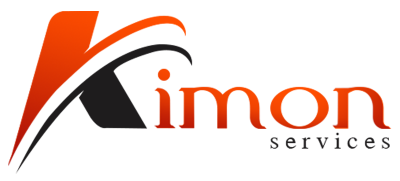In the dynamic world of digital marketing, content length and engagement play pivotal roles. These elements are not just buzzwords but are integral to the success of any blog or article. This exploration dives deep into understanding how content length and engagement influence various aspects like reader engagement, SEO, and user experience.
When discussing the ideal word count for a blog or article, it’s essential to understand that quality trumps quantity. However, content length and engagement are closely knit. Longer content, often referred to as long-form content, allows for comprehensive coverage of a topic, potentially increasing the engagement rate by providing more value to the reader. Conversely, short-form content is concise and to the point, catering to users looking for quick answers, thus influencing the time on site and bounce rate. The challenge lies in balancing ‘Content length and engagement’ to optimize reader engagement and SEO.
The readability score of a piece is a critical factor in user engagement. Content should be easily digestible and simple to navigate. This involves using headings, subheadings, and bullet points to break text, enhancing the user experience. This readability directly affects the dwell time and engagement metrics.
SEO is intricately linked with content length and engagement. Search engines prefer content that provides comprehensive information on a topic, often rewarding longer content with better rankings. However, this isn’t to say shorter articles don’t have their place. ‘Content length and engagement’ should align with the search intent. Sometimes, users prefer concise, straight-to-the-point content, especially when looking for quick answers.
The debate between long-form content and short-form content is ongoing. Long-form content tends to cover a topic in-depth, leading to higher engagement rates, improved dwell time, and often better organic reach. It allows for the inclusion of more keywords, both primary and LSI (Latent Semantic Indexing), enhancing the SEO content length strategy. Short-form content, while brief, can be equally powerful if it’s well-optimized and meets the user’s immediate needs, thereby positively influencing the content performance and engagement signals.
Understanding visitor behaviour is crucial. Metrics like average session duration and scroll depth offer insights into how users interact with content. A longer article might have a higher bounce rate if it doesn’t engage the reader or is too complex. In contrast, a shorter, well-crafted piece might keep the reader engaged for longer, even if the word count is less. It’s about finding that sweet spot where content length and engagement meet the needs of both the search engines and the users.
Several strategies revolve around content length and engagement, such as optimizing article length for readers, understanding the impact of content length on bounce rate, and engaging readers with optimal content length. These strategies are not one-size-fits-all and must be tailored to the specific audience and content goals.
Understanding Engagement
User engagement is a critical factor in the success of any digital content, particularly in blogs and articles. It refers to how interactively readers participate in the content. High engagement often translates to more time on the page, lower bounce rates, and more shares and comments. ‘Content length and engagement’ are inherently linked, as the depth and quality of the content can significantly influence these metrics.
Metrics such as time on the page, bounce rate, shares, and comments are vital for measuring user engagement. They provide insights into how users interact with the content. A longer time on the page and a lower bounce rate typically indicate that readers find the content valuable and engaging. Shares and comments reflect the content’s ability to provoke thought and discussion, crucial aspects of reader engagement.
The debate between long-form content and short-form content is essential in understanding content length and engagement. Long-form content allows for a thorough exploration of topics, leading to potentially higher engagement rates. It provides the space to include a variety of engagement metrics like images, videos, and interactive data, all of which can contribute to a higher dwell time and reader engagement. On the other hand, short-form content caters to readers’ quick consumption needs, which is equally important in the fast-paced digital world.
The SEO content length is a strategy that involves optimizing the length of the content to meet SEO standards while ensuring it remains engaging and valuable. This strategy includes understanding the ideal content length for specific topics and audiences, and aligning it with SEO and user engagement goals. The readability of the content significantly affects engagement. Content should be easy to read and understand, ensuring a positive user experience and enhancing the content quality.
Visitor behaviour metrics, such as average session duration and scroll depth, provide additional insights into how users engage with content. A deeper scroll depth and longer session duration indicate that users are finding the content engaging and are spending more time interacting with it. These metrics help in optimizing content performance and making informed decisions about content strategy.
The Impact of Content Length on Engagement
In the realm of digital marketing, content length and engagement is a topic of perennial interest. Various studies and statistics have illustrated a correlation between the length of content and user interaction, making it imperative for SEO specialists and content creators to understand how different content lengths can affect engagement.
Firstly, long-form content typically refers to articles or blogs exceeding 1,200 words. This content style allows for a comprehensive exploration of topics, providing detailed information that can significantly enhance reader engagement. Long-form content is often associated with higher engagement metrics such as increased time on page, lower bounce rates, and higher share rates. This is because such content tends to be more informative, offering the depth that readers seeking extensive knowledge appreciate. Consequently, this leads to better dwell time, higher engagement signals, and a more favourable impact on SEO.
On the other hand, short-form content, usually under 1,200 words, caters to readers seeking quick answers or brief overviews. This content type can be highly effective in engaging users who have shorter attention spans or are browsing on mobile devices. While short-form content may have higher bounce rates due to its brevity, it can achieve better engagement rates by quickly delivering the sought-after information, thus respecting the user’s time and potentially enhancing content performance.
The ideal Content length and engagement strategy involves a balance. It’s crucial to consider visitor behavior and the content’s purpose. For instance, while how long should blog posts be is a common query, the answer varies depending on the topic’s complexity, audience preferences, and the specific engagement metrics targeted. Both benefits of long content and short vs long content impact should be weighed.
When optimizing content length and engagement, readability and content quality are paramount. Regardless of length, the content must be well-structured, easy to read, and aligned with SEO best practices. This involves using an appropriate mix of primary keywords and LSI keywords such as ‘SEO content length, ideal content length, and article length, which help search engines understand and rank content.
Several studies and analytics reviews have shown that long-form content often leads to maximizing engagement with content length and improving dwell time with content length. These pieces are shared more frequently, leading to higher organic reach. However, it’s also noted that well-crafted short-form content can outperform longer content if it’s more aligned with user intent and provides immediate value.
Optimal Content Length for Various Formats
Determining the optimal content length for various formats is vital in crafting compelling and engaging material. content length and engagement are closely interconnected, and the ideal length varies across blogs, articles, social media posts, videos, and other formats. It’s influenced by the audience’s preferences, the platform’s norms, and the content’s objectives.
Blogs and articles thrive on providing in-depth information. Long-form content in these formats usually ranges from 1,000 to 2,000 words, sometimes extending to 5,000 words for comprehensive guides. This length allows for detailed exploration of topics, enhancing content quality and ‘SEO.’ However, the readability score and ‘User experience’ must not be compromised. Blogs should integrate engagement metrics such as time on page and ‘Dwell time’ to measure success. Including the long-tail keyword and how long should blog posts be often leads readers to these insights.
Social media posts, on the other hand, demand brevity and immediate impact due to the fleeting attention spans on these platforms. Twitter’s character limit is an excellent example of enforced brevity, while Instagram captions vary with some longer form explorations. The engagement rate on these platforms is often linked to the quick delivery of value, making every word count.
Videos are increasingly dominant in content strategy, with user engagement heavily dictated by the type of video. Educational and how-to videos might benefit from being longer, allowing for a detailed walkthrough, while entertainment or quick tips might be shorter to retain viewer attention.
The Ideal content length for each format also depends on the visitor engagement goals. If the aim is to reduce bounce rate or improve ‘Time on site’, longer, value-rich content might be more appropriate. For quick updates or announcements, shorter content might be more effective.
In any format, content optimization is crucial. Using readability, content performance, and engagement signals like shares, comments, and average session duration, content creators can tailor their length. Additionally, understanding visitor behaviour through ‘Engagement metrics’ and adjusting content accordingly is a hallmark of successful content strategy.
The SEO content length plays a significant role in search rankings, particularly for blogs and articles. Long-form content tends to perform better in organic reach and provides more opportunities to use a variety of keywords, including long-form content benefits and short-form content engagement.
Quality vs. Quantity: Striking the Right Balance
In the realm of digital content, the debate between quality and quantity is ever-present. content length and engagement are critical factors in this discussion. Striking the right balance between the two is essential for any successful SEO strategy.
Quality content is the cornerstone of user engagement. It refers to content that is accurate, informative, well-written, and valuable to the reader. However, the length of the content can significantly impact engagement. content length and engagement are often correlated, as longer content has the potential to delve deeper into subjects, providing more comprehensive information. This can lead to increased time on site and dwell time, important metrics in SEO and ‘User Experience.’
Long-form content, generally considered to be over 1,000 words, allows for a thorough exploration of topics. This depth can lead to higher engagement rates as readers spend more time absorbing and interacting with the material. However, maintaining reader engagement throughout such lengthy content is a challenge. It requires strategies such as using compelling storytelling, incorporating multimedia elements, and structuring the content with clear, engaging headings to keep readers scrolling.
On the other hand, short-form content is typically under 1,000 words and is favoured for its conciseness and ability to quickly deliver information. While it may not delve as deeply into topics, it can effectively meet the immediate needs of users, addressing their ‘Searcher’s intent’ quickly. The key is to ensure that even short-form content is high-quality, offering immediate value to the reader.
Regardless of length, all content should aim for a high readability score, making it accessible and enjoyable for a wide audience. content optimization is also critical; this involves using relevant keywords, including both NLP and LSI terms such as content length, user engagement, and ‘bounce rate,’ to improve ‘Search Engine Optimization.’
Content creators must consider word count and reader engagement strategies, like including questions or calls to action to encourage comments and shares. ‘Bounce Rate’ and engagement metrics offer insights into how effectively the content maintains interest, and adjustments in length and quality should be made accordingly.
The debate of how long should blog posts be’ is ongoing, but the answer lies in balancing the need for comprehensive, quality content with the reader’s desire for digestibility and relevance. For Content length and engagement, the best practice is to tailor the length according to the topic’s complexity, the audience’s preferences, and the content’s goals.
Conclusion
Key takeaways include understanding that both long-form and short-form content have their unique advantages and applications. Long-form content, typically more than 1,000 words, excels in depth and detail. It tends to foster higher engagement rates, as evidenced by metrics like time on site, dwell time, and comprehensive reader engagement. This format is favorable for topics that require thorough exploration or when aiming to establish authority and expertise, aligning with Google’s E-A-T guidelines.
Conversely, short-form content, usually under 1,000 words, caters to audiences seeking quick, easily digestible information. It often results in a lower bounce rate and can effectively capture the user’s attention in a brief span. This format is ideal for topics that warrant a straightforward approach or when targeting platforms where users prefer concise content.
The concept of SEO content length plays a crucial role in how content is indexed and ranked by search engines. A balance between word count, quality content, and search engine optimization is essential for organic reach. Content optimization, readability, and aligning with user intent are paramount, regardless of length.
Engagement metrics such as average session duration, scroll depth, and engagement signals provide valuable insights into how users interact with content. These metrics guide content creators in tailoring their strategies to maximize engagement, whether through adjusting the article length, enhancing the readability score, or focusing on specific topics like ‘how long should blog posts be’ or maximizing engagement with content length.
Experimentation and continuous learning are critical in finding the sweet spot for Content length and engagement. It’s important to regularly analyze content performance, visitor behavior, and engagement metrics to understand what resonates with your audience. This approach not only helps in optimizing content length for SEO but also in engaging readers with optimal content length, thereby improving dwell time and overall user engagement.
FAQs
What is the ideal content length for maximum engagement?
The ideal content length for maximum engagement varies but generally, long-form content around 1,000 to 2,000 words tends to engage readers with more detailed and in-depth information.
How does content length impact SEO?
Content length impacts SEO by potentially improving rankings as longer content can cover more comprehensive information, incorporate more keywords, and signal in-depth quality content to search engines.
Does longer content mean better engagement?
Longer content does not inherently mean better engagement; it depends on the quality of content, the topic’s complexity, and the audience’s preferences. However, well-structured longer content often allows for deeper exploration, which can improve engagement.
What is the optimal word count for blog posts?
The optimal word count for blog posts typically ranges between 1,000 and 2,000 words, balancing detail with reader attention spans, though it greatly depends on the topic and audience.
How does content length affect bounce rates?
Content length can affect bounce rates inversely; longer content might increase bounce rates if not engaging enough, while concise, relevant content can reduce bounce rates by quickly delivering value.
Are readers more engaged with longer or shorter content?
Reader engagement depends on the content’s relevance and quality, not just length. However, longer content has the potential for higher engagement if it is well-written and informative, while shorter content might engage those seeking quick answers.
How can content length improve my SEO ranking?
Content length can improve SEO ranking as longer content often allows for more comprehensive coverage, keyword inclusion, and user engagement signals, which are favorable to search algorithms.
What is the relationship between content length and dwell time?
The relationship between content length and dwell time is positive; longer content can increase dwell time as users take more time to read through, provided the content is engaging and valuable.
Does content length affect conversion rates?
Content length can affect conversion rates; well-optimized, appropriately long content can lead to higher conversion by thoroughly informing and engaging the reader, while overly long or short content might lead to lower conversions.
How do I determine the right content length for my audience?
Determine the right content length for your audience by analyzing engagement metrics, understanding their preferences and search intent, and experimenting with different lengths to see what yields the best engagement and performance.





